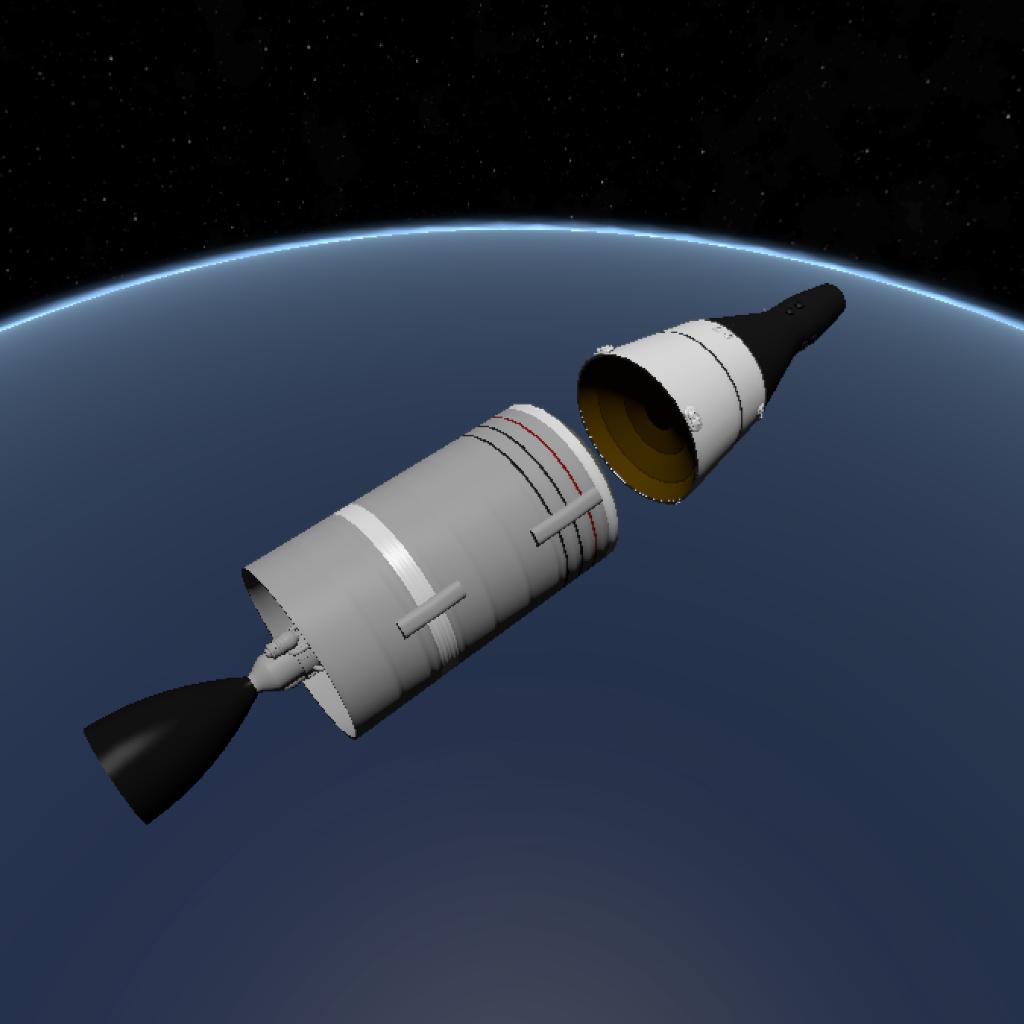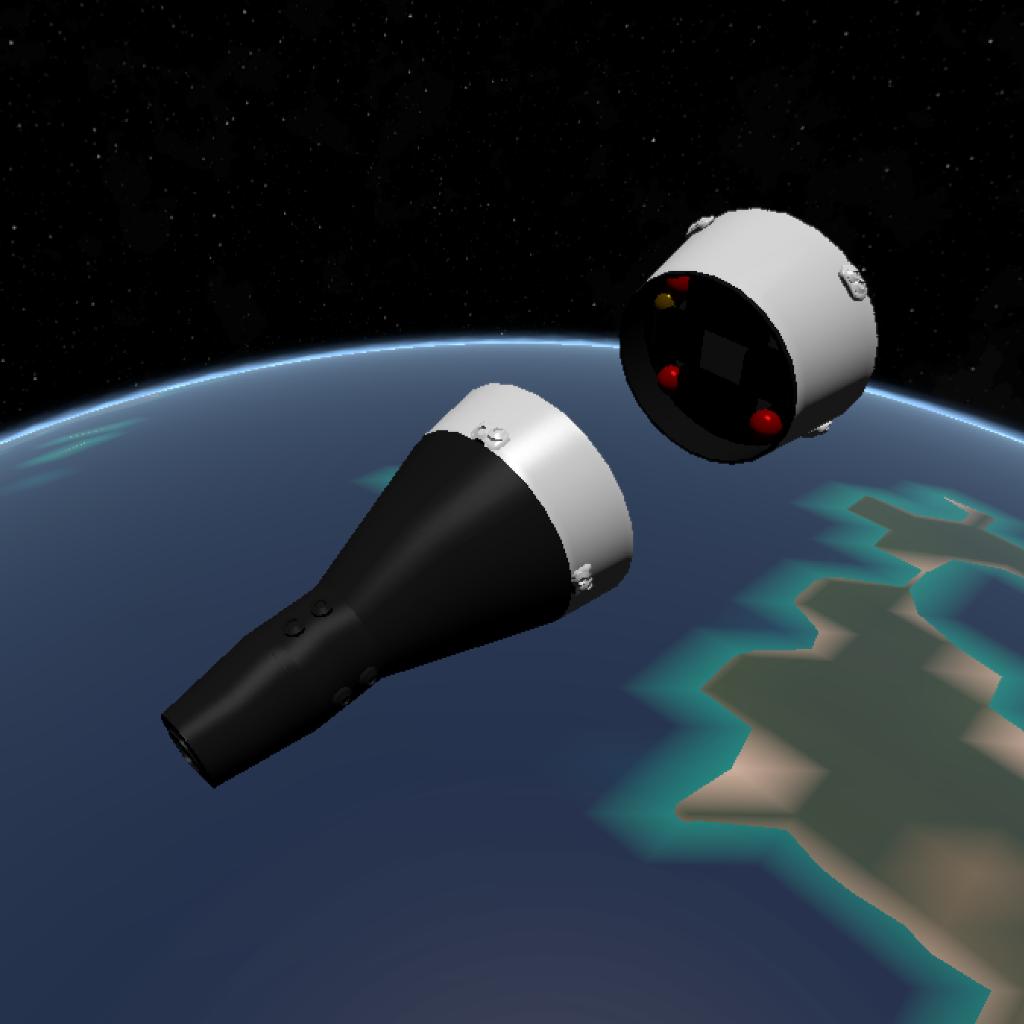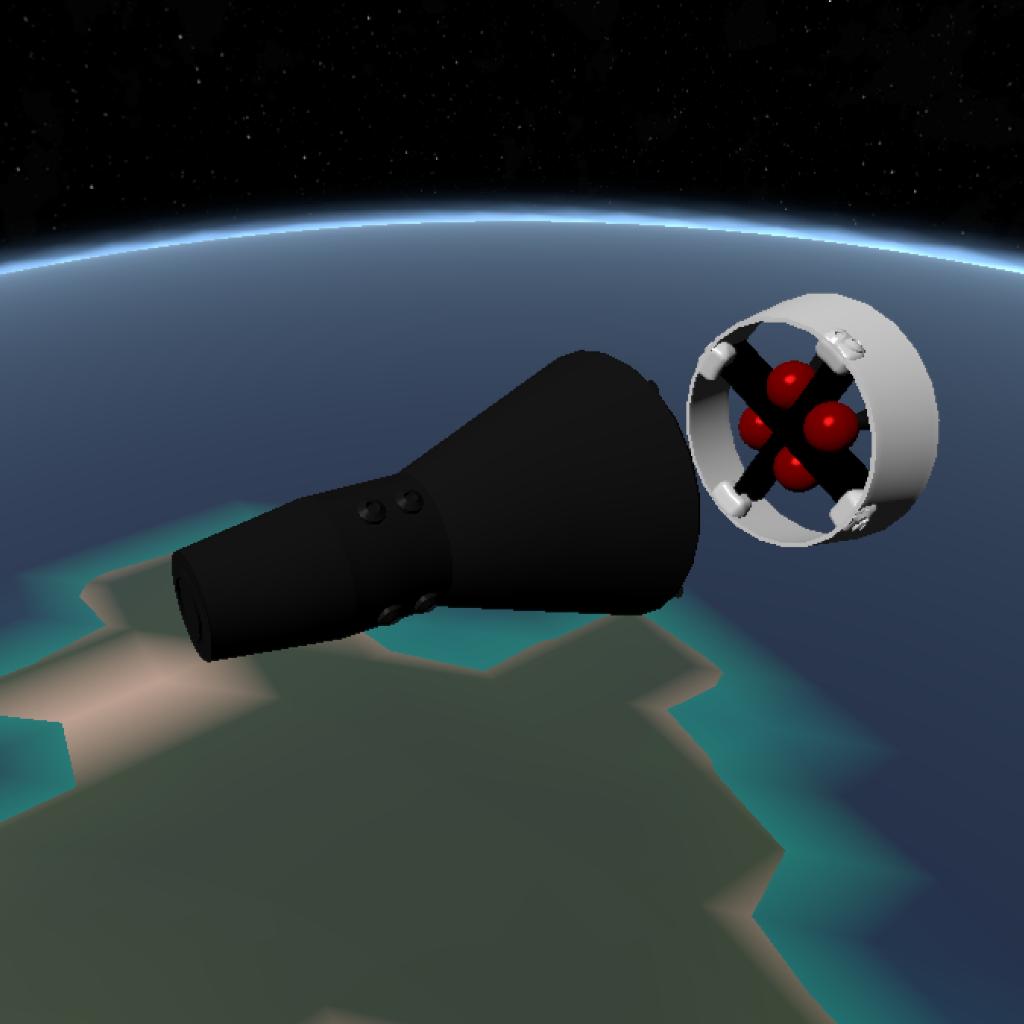Rocket is made by 3DExplorer
I didn't make this rocket, I just added some details

The Titan II GLV (Gemini Launch Vehicle) or Gemini-Titan II was an American expendable launch system derived from the Titan II missile, which was used to launch twelve Gemini missions for NASA between 1964 and 1966. Two uncrewed launches followed by ten crewed ones were conducted from Launch Complex 19 at the Cape Canaveral Air Force Station, starting with Gemini 1 on April 8, 1964.
The Titan II was a two-stage liquid-fuel rocket, using a hypergolic propellant combination of Aerozine 50 fuel and nitrogen tetroxide oxidizer. The first stage was powered by an LR87 engine (with two combustion chambers and nozzles, fed by a single set of turbomachinery), and the second stage was propelled by an LR-91 engine.
In addition to greater payload capability, the Titan II promised greater reliability than the Atlas LV-3B, which had been selected for Project Mercury, because Titan's hypergolic-fueled engines contained far fewer components.[citation needed]

Several modifications were made to the Titan missile to human-rate it for Project Gemini:
A "Gemini Malfunction Detection System" was installed to inform the crew of the rocket's status, and improve response in an emergency.
Redundant systems were installed to reduce the chances of launch failures.
The inertial guidance system was replaced by a lighter-weight ground-radio guidance system
The avionics truss in the second stage was modified slightly
To help guard against the possibility of a guidance malfunction causing the engine nozzles to gimbal hard right or left, an extra backup guidance system was added.
The second stage propellant tanks were lengthened for longer burn time and unnecessary vernier engines and retrorockets were removed. Because the second stage engine had had issues with combustion instability, it was equipped with baffled injectors.
The first stage was loaded with 13,000 pounds (5.9 t) more propellant than the Titan ICBM although the storage tank size remained unchanged.
Modifications were made to the tracking, electrical and hydraulics systems in the interest of improved reliability.
The propellants were chilled to slightly improve vehicle performance. This allowed for more mass to be accommodated.
First stage engine thrust was reduced slightly to cut down on vibration and G loads.
First stage engine burn would go until propellant depletion unlike Titan ICBMs which were designed to cut off when propellant flow/pressure and engine thrust started dropping as the tanks emptied. This was to prevent the possibility of a malfunctioning pressure sensor triggering an abort condition. Also, running until depletion would slightly boost the Titan's capacity for payload.
The Titan II had a much higher thrust-to-weight ratio than the Saturn V. Astronauts experienced almost 6G before the second stage stopped firing at 100 miles (160 km) altitude. Richard F. Gordon Jr. compared the Titan II to "a young fighter pilot's ride. It's faster than the Saturn's old man's ride." Frank Borman said that simulations did not prepare him for the "almost deafening" noise, which he compared to a jet's afterburner or large train. Walter Schirra and Gordon Cooper reported that the ride was smoother than on the Atlas, however.
From : Wikipedia
GENERAL INFO
- Created On: Android
- Game Version: 0.9.700.0
- Price: $9,844k
- Number of Parts: 402
- Dimensions: 32 m x 3 m x 3 m
PERFORMANCE
- Total Delta V: 5.3km/s
- Total Thrust: 2.2MN
- Engines: 9
- Wet Mass: 86,152kg
- Dry Mass: 16,691kg
STAGES
| Stage | Engines | Delta V | Thrust | Burn | Mass |
|---|---|---|---|---|---|
| 1 | 4 | 2.8km/s | 1.8MN | 88s | 86,152kg |
| 2 | 1 | 2.3km/s | 433kN | 1.7m | 27,973kg |
| 6 | 4 | 227m/s | 7kN | 1.8m | 3,297kg |









